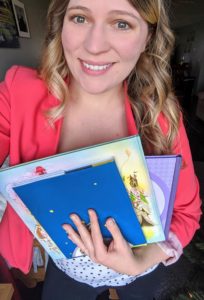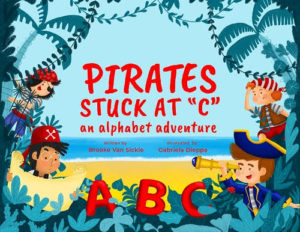“How to Incorporate a Picture Book in the Classroom”
As a teacher, I LOVE to read new picture books to my students, but sometimes it’s hard. Especially when I’m trying to connect them back to the curriculum (particularly the Common Core standards that we have in the states.) So I’ve discovered some easy tricks to incorporate a picture book into the classroom.
How to Incorporate Picture Books into Your Curriculum:
The Internet has helped immensely in creating new lesson plans. Particularly in thanks to Pinterest. Once I find a picture book I love (and know the students will too), I will try to use it in the classroom.
First, I Research the Author’s or Publisher’s Website for a Teacher’s Guide.
Most authors have a website to get to know them better and use it as a listing for the books they’ve published. But some also have free resources for teachers and parents to use alongside their books. So this is where I start.
If I can’t find a resource on the website, then I’ll do a quick Google or Pinterest search.
If None Exist, then Create your Own Guide.
The easy, already-done-for-you way is always preferred, but we can’t always be so lucky. In the case of not being able to find any teacher resources online, you can always create your own lesson plan that works with your curriculum.
The steps to create your own lesson plan based on children’s books:
Step 1 – Look for Teaching Elements.
A lot of picture books are designed with a lesson in mind (even when they’re just funny or adorable.) I’ll look for those to pull into a current lesson topic I know we’re going to cover. Like a counting book, a specific person of interest, or emotion we’re discussing.
If the book doesn’t have a specific teaching element, then I will revert to common core standards that I know need to be resolved for that grade level. Like recognizing phonemes and understanding the basic parts of the story structure, (characters, setting, etc.)
Step 2 – Look for Worksheets that connect to the Element.
Even if a book doesn’t have a worksheet created for it, there are still TONS available online. Especially on Pinterest.
Worksheets like building-a-story, character development, letter recognization, etc. work great in a pinch when I’m in need of something to use alongside a story.
Step 3 – Get Creative.
Now that I’m a published author, I create teacher’s guides for my books. And I always try to make sure the book can be used for all subjects (including science, social studies, music, etc.). Which means I’ve had to learn to be creative.
In these situations, I will come up with a fun activity that will connect back to the book but also work in the classroom setting. Like with my upcoming book, PIRATES STUCK AT “C”, I have a worksheet where the students can tell me what they would hope for if they found a chest of treasure.
This is geared for Pre-K to Kindergarten to help with their writing skills, but it could also be used in an art class since the other half is drawing their treasure ideas. My goal is for the students to have fun while learning.
If you’re in need of a picture book that already comes with a teacher’s guide, my new book PIRATES STUCK AT “C” that comes out this month! I’ll be sure to send you the guide for free. Just email your order number to me at brooke@journeytokidlit.com.
Happy reading!
Guest Post by Brooke Van Sickle: Brooke Van Sickle is a member of the Society of Children’s Book Writers & Illustrators (SCBWI) and Regional Webmaster for the Iowa-SCBWI region. She’s also a member of the Independent Book Publishers Association (IBPA) and Midwest Independent Publishers Association (MiPa).
PIRATES STUCK AT “C”, published by BiblioKid Publishing, is Brooke Van Sickle’s debut picture book. She also has 2 more books expected in 2020. When not writing her own books, Brooke teaches other aspiring writers how to write and publish kids’ books at www.journeytokidlit.com.
Learn more about her on her website www.brookevansickle.com and connect with her on social @journeytokidlit.
Picture books are definitely so important in the classroom–thank you, Brooke, for helping us guide the use of them!



